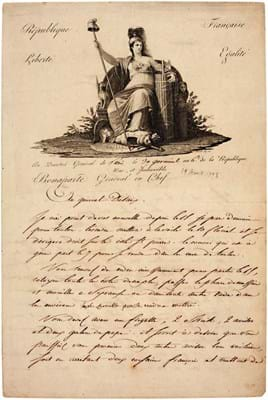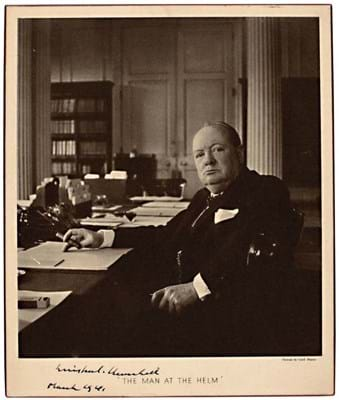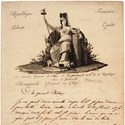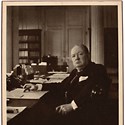First seen at Sotheby’s in the 1950s, and 12 years ago in a Bloomsbury sale, a three-page warrant of 1816 in which Henry, 3rd Earl Bathurst appoints Sir Hudson Lowe as Napoleon’s jailer on St Helena made £17,000 in a third outing.
The warrant re-surfaced in a July 8-15 auction, conducted by Sotheby’s (25/20/13.9% buyer’s premium), that presented a single-owner collection of historical and other manuscript material.
After their first meeting Napoleon had pronounced his new jailer to be “hideous”, but hoped that “the man’s disposition may perhaps make amends for the unfavourable impression which his face produces”.
This was not a good start and their relationship did not improve. The two men had just six increasingly acrimonious meetings during their first months together on St Helena, after which, though living just a few miles apart on one of the most remote islands in the world, they steadfastly refused to meet.
Egyptian campaign
Sold at £42,000 was a letter dating from a time when Napoleon was in a very different situation and mood.
Signed and dated April 1798, and including a few autograph additions by Napoleon, it was addressed to Général Desaix, ordering him to assemble ships and armaments ready to sail for Malta, where he would be expected to meet with Napoleon prior to the planned Egyptian campaign.
It was Desaix’s division that bore the brunt of the Mamluk attack at the Battle of the Pyramids and he crowned his reputation by his victories over Murad Bey, but he died not long afterwards at the Battle of Marengo.
Monet’s begging letter
Begging an unidentified recipient for help in the desperate situation in which he finds himself, with his furniture loaded on a carriage, but without a penny to pay the removers, and asking for one hundred francs to tide him over, an undated two-page letter in Claude Monet’s hand was sold at £22,000. It was last seen at Sotheby’s in 2000.
Brutality to the Moors
Including the words “We order and command that henceforth no Moorish man or woman, unless they are prisoners, shall dare to enter or be in any city, town, village or territory of the aforesaid Kingdom [of Granada] on pain of death and of the loss of all his or her goods for our Treasury”, a brutal decree of 1501 signed by both Ferdinand V of Spain and Queen Isabella sold at £42,000.
This large and handsome document was one of a series of increasingly severe decrees that began to regulate the life of the Moors in Spain following the fall of Granada in 1492. Once part of the Spiro family collections and sold at Christie’s, New York, in 1984, it was last seen in 2003 in its London rooms.


















